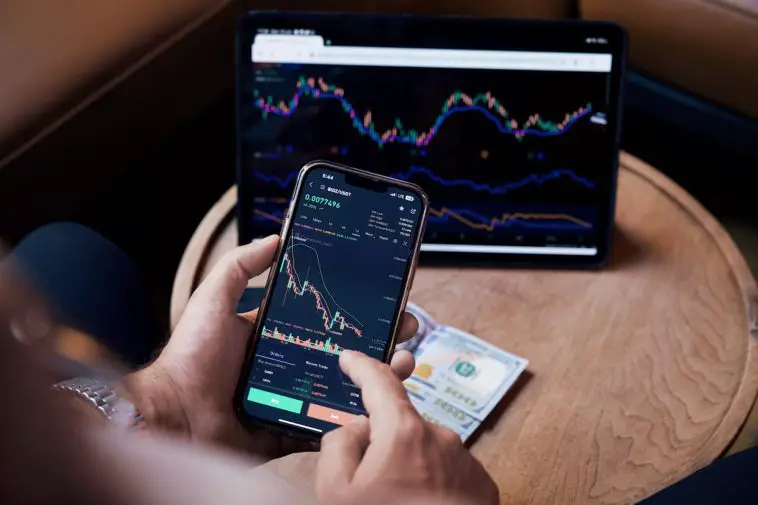In recent years, the financial landscape has been rapidly evolving, with digital currencies taking center stage. Among these digital currencies, XRP has emerged as a prominent player, offering numerous advantages and applications. In this article, we will explore the increasing adoption of XRP in emerging markets, facilitated by platforms like BitlQ trading platform which is an online trading platform, and its potential to facilitate financial inclusion and foster economic growth.
The Rise of XRP in Emerging Markets
Understanding XRP
XRP is a digital currency that operates on a decentralized network called the XRP Ledger. It was created by Ripple Labs, a San Francisco-based technology company, with the aim of facilitating fast, low-cost international money transfers. Unlike traditional banking systems, which rely on intermediaries and can be slow and expensive, XRP enables near-instantaneous cross-border transactions.
Benefits of XRP Adoption
The adoption of XRP in emerging markets brings forth several benefits:
- Efficiency: XRP transactions settle in a matter of seconds, making it an ideal solution for individuals and businesses that rely on timely payments. This speed can significantly improve the efficiency of cross-border remittances, reducing transaction costs and increasing liquidity.
- Affordability: Traditional financial systems often impose high fees for international money transfers. XRP’s low transaction fees make it an attractive alternative, particularly for individuals in emerging markets who depend on remittances for their livelihoods. By reducing costs, XRP promotes financial inclusion by making cross-border transactions more accessible.
- Scalability: The XRP Ledger has the capacity to handle a vast number of transactions per second, making it scalable for large-scale adoption. This scalability is crucial for emerging markets that experience rapid economic growth and require a robust financial infrastructure.
- Liquidity: XRP’s liquidity has been increasing steadily, thanks to the growing network of financial institutions and payment providers that leverage the currency. This liquidity enhances market depth, reducing slippage and volatility, which is particularly beneficial in emerging markets where stable financial systems are vital for economic development.
XRP and Financial Inclusion
Financial inclusion, the availability of affordable financial services to individuals and businesses, is a key driver of economic growth and poverty reduction. XRP plays a significant role in promoting financial inclusion in emerging markets through the following mechanisms:
- Cross-Border Remittances: Many individuals in emerging markets rely on remittances from family members working abroad. However, traditional remittance channels often involve high fees and slow processing times. XRP’s fast and affordable transactions enable seamless cross-border remittances, ensuring that funds reach their intended recipients promptly and securely.
- Access to Banking Services: In many developing countries, a significant portion of the population remains unbanked, lacking access to basic financial services. By leveraging the XRP Ledger, financial institutions can offer cost-effective banking solutions, such as digital wallets and mobile banking, to individuals who were previously excluded from the formal banking sector.
- Micropayments and Microlending: XRP’s low transaction fees and fast settlement times make it suitable for micropayments, enabling the monetization of digital content, small-scale e-commerce, and peer-to-peer transfers. Additionally, XRP can facilitate microlending, empowering entrepreneurs and small businesses with access to affordable credit.
Case Studies: XRP Adoption in Emerging Markets
Case Study 1: Southeast Asia
Southeast Asia, with its large population and diverse economies, presents significant opportunities for XRP adoption. Countries like Thailand, Vietnam, and the Philippines have witnessed a surge in the use of digital payments, driven by the growing penetration of smartphones and internet connectivity. Ripple’s partnerships with financial institutions in these countries have facilitated the integration of XRP into their remittance corridors, improving the speed and cost-effectiveness of cross-border transactions.
Case Study 2: Sub-Saharan Africa
Sub-Saharan Africa faces numerous challenges in its financial landscape, including limited access to banking services and high remittance costs. XRP has gained traction in this region, enabling faster and cheaper remittances for individuals and businesses. For example, mobile money platforms in countries like Kenya and Nigeria have integrated XRP, providing users with a more efficient way to send and receive funds.
Conclusion
The adoption of XRP in emerging markets holds immense potential for driving financial inclusion and fostering economic growth. By offering fast, affordable, and scalable cross-border transactions, XRP addresses the pain points of traditional financial systems, benefiting individuals, businesses, and entire economies. As digital currencies continue to reshape the global financial landscape, XRP’s role in facilitating financial inclusion and economic growth is set to expand further.




